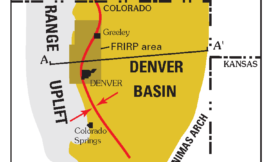There are several factors that can have a large effect on value of minerals, including commodity prices, when wells are drilled, and lease terms. Of all of these, the one factor that is in our control is the lease royalty rate. In this episode we talk about tips for maximizing value of your minerals and a quick rule of thumb you can use to determine value in certain cases.
Be sure to also subscribe on Apple Podcasts via the link above and please leave us an honest rating and review. We read every one of them and sincerely appreciate any feedback you have. To ask us a question to be featured on an upcoming episode, please leave a comment below or send an email to feedback@mineralrightspodcast.com.
Understanding Mineral Valuation
Mineral valuation is the process of determining the current and future value of a mineral interest. The income approach, also known as the discounted cash flow analysis method, is one of the most commonly used and accurate valuation methods. It involves estimating the future income from the production of the mineral interest and discounting it back to its present value.
To assess the value of mineral rights using the income approach, it is essential to understand the potential income that can be generated from the property. This income is derived from the production of oil and gas reserves, which is dependent on factors such as the location of the property, the commodity prices, and the drilling activity in the area.
Income Approach
If you own mineral rights or royalties, it’s important to know how much they’re worth. One way to determine their value is through the income approach or discounted cash flow analysis method. In this method, the present value of all estimated future cash flows is calculated based on certain assumptions.
The Discount Rate
The first assumption that’s made is the discount rate. This is the rate of return that an investor would expect to earn on their investment. The discount rate takes into account the risk associated with the investment, as well as the time value of money. The higher the risk of the investment, the higher the discount rate should be, and the lower the present value of the future cash flows.
Projected Cash Flows
The second assumption is the projected cash flows. This is the estimate of future income that the mineral rights or royalties will generate. The projected cash flows are estimated based on a number of factors, including the timing of when additional wells might get drilled, current production rates, your decimal interest in the unit or well, the estimated future production rates, and the commodity prices, amongst other things.
Future Commodity Prices
Commodity prices can be volatile, which makes estimating future cash flows difficult. It’s important to stay up to date on current market trends and to consider the potential impact of economic and political events on commodity prices.
Production Rates
To estimate future production on existing wells, engineers will perform a “Decline Curve Analysis.” A decline curve analysis fits a hyperbolic or modified hyperbolic curve to a set of historical production data to estimate future production rates. Various factors and information from similar reservoirs are used to come up with the best estimate of how the well will perform and how much oil and/or gas will be produced over the life of the well. This estimate of the total volume of hydrocarbons is referred to as the Estimated Ultimate Recovery or the oil and gas reserves associated with that well.
Lease Operating Expenses
Valuing Working Interests follow the same methodology as the income approach with the additional step of factoring in capital costs and operating expenses. Operating expenses are used to determine when a well no longer becomes economic to continue operating. At the end of the well life, costs for plugging & abandoning the well need to be considered as well. At the end of the day, operating costs are just subtractions to cash flow so are treated the same way when discounted back to the effective date of the evaluation.
Factors Affecting Mineral Value
There are several factors that can affect the value of minerals, including commodity prices, drilling activity in the area, and lease terms. However, the most crucial factor that can affect the value of mineral rights is the lease royalty rate.
The lease royalty rate is the percentage of the gross revenue that the mineral owner receives from the production of oil and gas. A higher royalty rate means a larger royalty check in the future, which ultimately increases the overall value of the mineral interest. As a result, it is important to negotiate a higher lease royalty rate to maximize the value of your mineral rights.
Rules of Thumb
Many people use a “rule of thumb” to value their minerals, which can be a quick and easy way to estimate the value of the property. However, it is important to keep in mind that these rules are not always accurate and can lead to an incorrect valuation.
Two common rules of thumb are the cash flow multiple and the lease bonus multiple. The cash flow multiple is calculated by multiplying the monthly royalty income by a factor of 60 to 70. This rule of thumb can only be used if the wells have been producing for at least four to five years and if there is no undeveloped acreage on the property.
The lease bonus multiple is calculated by multiplying the lease bonus by a factor of 50 to 100. However, this rule of thumb is often inaccurate and should not be relied upon for an accurate valuation.
Tips for Maximizing Mineral Value
To maximize the value of your mineral rights, there are several steps you can take. First, negotiate for a higher lease royalty rate and limit post-production deductions in the lease agreement. Second, it is important to get multiple offers to ensure that you are getting a fair price for your property. Lastly, work with an expert to perform an accurate valuation using the income approach to ensure that you are maximizing the value of your mineral rights.
Final Thoughts
Valuing mineral rights can be a complex process, and it is crucial to work with an expert who can help guide you through the process. The income approach is one of the most accurate valuation methods, and it involves estimating the future income from the production of the mineral interest and discounting it back to its present value. Whether you are looking to sell or simply want to understand the value of your minerals, working with an expert to perform an accurate valuation can ensure that you are getting a fair price for your property.
If you are interested in learning more about mineral valuations or would like to speak with an expert, please contact us for a free consultation. I’m here to support you and help you navigate the complexities of mineral valuation.
Resources Mentioned in This Episode
- MRP 6: How to Negotiate an Oil and Gas Lease
- MRP 4: How Mineral Rights are Valued
- MRP 84: The Top 6 Things That Affect The Value of Mineral Rights and Royalties
- MRP 32: Rob Prentice on IRS Mineral Rights Valuation and the National Association of Royalty Owners
- MRP 59: The Alternate Valuation Date with Rob Prentice
- MRP 159: Guide to Buying Mineral Rights
- MRP 160: Strategies for Investing in Mineral Rights
- MRP 126: Deep Dive on Investing in Mineral Rights, Royalties, and Working Interests
Thanks for Listening!
To share your thoughts:
- Leave a comment or question below (we read each one and your question may be featured in a future episode)!
- Ask a question or leave us feedback via email.
To help out the show:
Click the Apple Podcasts Logo Above to leave us a rating & review. It really helps us reach those that need to hear this information and only takes a minute. We greatly appreciate it! Plus, you can get a shout out on a future episode!
Thanks again – until next time!




